In recent years, Pakistan has been known as a country which is extremely dependent on foreign aid and funding to maintain its economy, the internal infrastructure for this reason is almost non-existent as the ruling class and establishment have come to recognize that Pakistan is too important in the region to be allowed to go bankrupt.
This however does not mean that things always go smoothly for Pakistan, as the last half a decade has shown us, regional politics can go from static to dynamic in a matter of years. Countries like Libya and Syria, with stable economies succumbed to regional changes. Therefore it will be a folly if the power corridors in Pakistan bank on geo-political rent as they have done since the 80`s.
All indicators currently suggest that the coming few years are going test Pakistan`s economy to the limit. Pakistan is currently in a highly geared rate. At Rs13 trillion ($124 billion), 77 pc of the budget is already allocated for loan repayments this year. This means that with 77% of budget allocated for loan repayments, only 23% of the budget remains to run the country. To put this into perspective. Pakistan`s budget for the fiscal year 2016-17 is Rs. 4,894,900,000,000. Out of this Rs. 3,769,073,000,000 is allocated for debt repayment and thus only Rs. 1,125,827,000,000 remain for running the country i-e a nuclear armed state which is also a front ally on the war against terror and a major geo political player in the region.
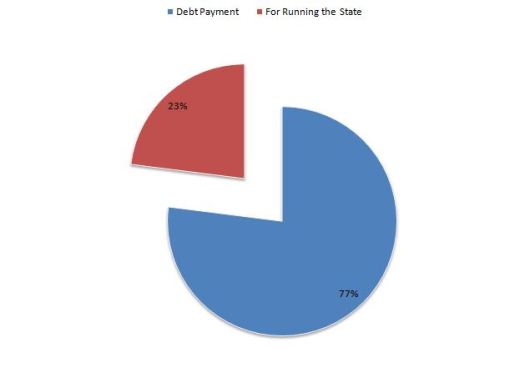
Mind you, these statistics might be a bit off because the government brought sweeping changes in the Fiscal Responsibility and Debt Limitation (FRDL) Act of 2005. The government amended all sections of the law that could have captured the exact quantum of the public debt. Furthermore, in order to make the budget look nice and tidy and to avoid a big and ugly deficit which would certainly have raised a lot of questions marks on the government`s ability to deliver, IMF gave the green light to maneuver some of the debt and remove it from the paperwork.
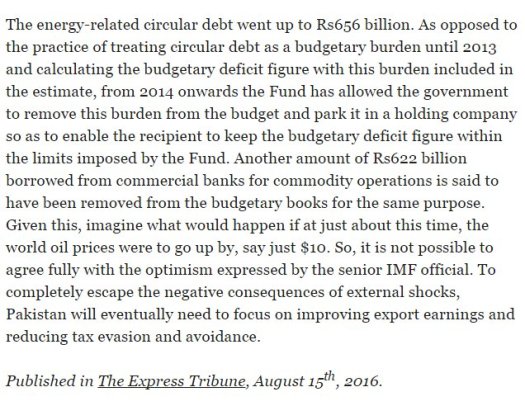
Again in order to put this into perspective, the total budget outlay for 2016-17 is Rs. 4894.9 billion and the government with tacit approval from IMF, conveniently parked approx Rs. 1200 billion of debt out of the papers and official figures, this practice does not eliminate the debt. The government has simply dusted the debt under the carpet, where it`ll continue to grow. This debt of approx Rs. 1200 billion represents around24.5% of the total budget outlay for the current fiscal year.
The current account has also continued to show a dismal performance inspite of repeated claims by the government that the economy is progressing at an absolutely mental pace.
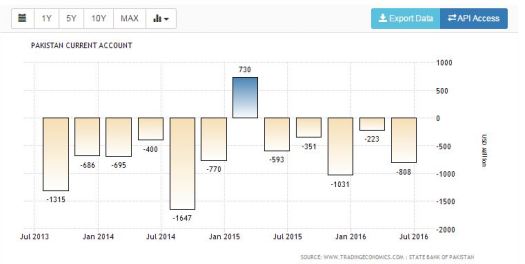
http://www.tradingeconomics.com/embed/?s=pablcur&v=201607221446n&h=300&w=600&ref=//current-account
source: tradingeconomics.com
Exports too show a corresponding dip, the most shocking bit is that no one in the country seems concerned about this rapid decline which the economy seems to have fallen over the last couple of months.
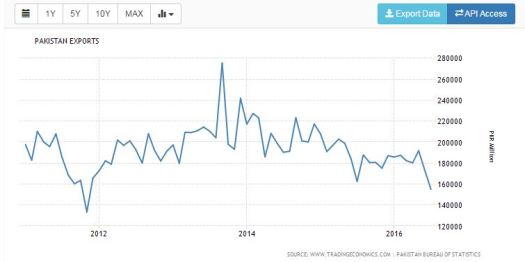
http://cdn.tradingeconomics.com/embed/?s=ptrdexp&v=201608170017n&d1=20110101&d2=20161231&h=300&w=600
source: tradingeconomics.com
The ruling elite seem to be totally disconnected from the storm which is brewing. The government is boasting that they have finally got rid of the begging bowl which they inherited from their predecessors. An argument based on economic juggling is what this is as the government is translating the 2 year grace period where they do not have to make any repayment back to IMF, as an end of the country`s dependence upon IMF. In reality the debt repayments to IMF will resume in 2018, the election year.
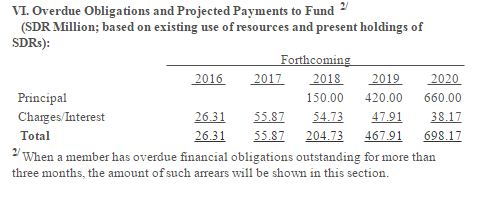
Source:https://www.imf.org/external/np/fin/tad/exfin2.aspx?memberKey1=760&date1key=2016-08-28
As evident, Pakistan will be required to repay approx $1360 billion between 2018-2020, an uphill and daunting task for whoever comes to power in 2018.This however does not mean total doom and gloom as government critics would like the people to believe. No, the China-Pak Economic corridor is a God send for the flailing economy of Pakistan, the solution to every economic problem, the proof of Sino Pak alliance! Or is it?
CPEC is reminiscent of the 80s and early 2000 when Pakistan`s economy was in shambles but the Afghan war in 80`s meant heavy flow of foreign aid to fund the war and stabilize Pakistan, the same happened in 1999 when Gen[R] Pervaiz Musharraf came to power through a popular coup, with Pakistan on the verge of fiscal default. However 9/11 attacks gave another lifeline as Pakistan became a front state ally in the war against terror and foreign aid and military grants gave some breathing space to the flailing economy. The downturn to these timely “bailouts” is that the establishment and power corridors within Pakistan know that the country will always be bailed out by geo political players and this has resulted in a total breakdown of internal infrastructure to revive local economy, no ruler in last 5 decades has strengthened the tax revenue system, no substantial and long term changes and reforms have been introduced to strengthen the economy from within, we have always relied on foreign aids and grants.
This in my humble opinion is the perfect recipe for disaster, while the power corridors are content with international crutches, the local economy has gone into total meltdown. The socio economic conditions in the country has deteriorated, people are rapidly losing faith in social order and conformity and anarchic behavior is becoming the new norm.


Check live Pakistan Debt Clock http://debtclock.pk/
LikeLike